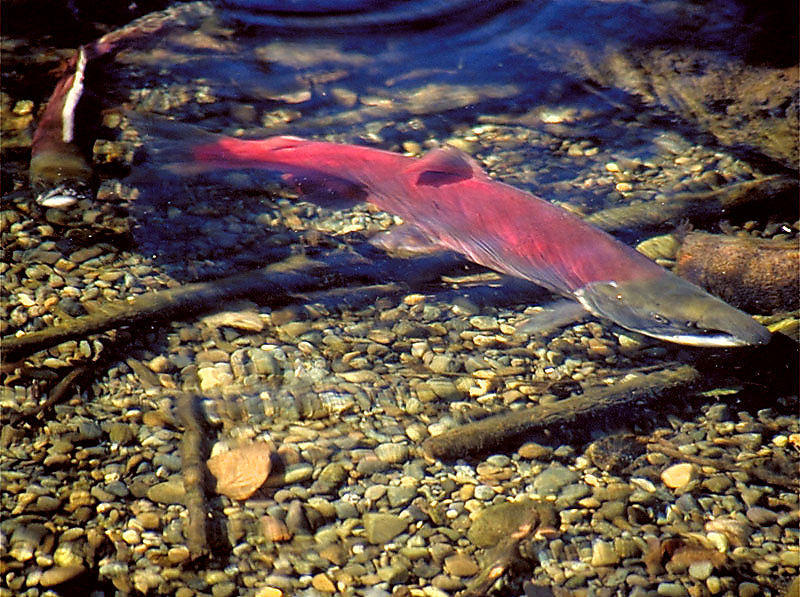
Sockeye Bypass Lake Washington, Go Straight To Hatchery From Locks
“Lake Washington sockeye” and “good news” are two phrases that have appeared together extremely rarely over the last decade and a half, but there’s a glimmer of hope to report this fall.
Nearly all of 279 adult sockeye that biologists captured at the Ballard Locks this summer and transported directly to tanks at a hatchery on the Cedar River for fall spawning have survived so far, a “phenomenal success,” said Jim Scott, a WDFW special assistant in the director’s office.

The emergency action by WDFW, the Muckleshoot Indian Tribe and Seattle Public Utilities to bypass deadly waters and increase egg collection on the system is expected to yield 441,600 eggs, he said.
“We see it as a step forward, an important step forward, given how short of eggs we’ve been in recent years,” Scott said.
This year’s sockeye return to the Ballard Locks tallied 38,619, which is the most since 2017.
Since midsummer the captured sockeye have been swimming in four 20-foot-diameter, cold-spring-fed tanks at SPU’s Landsburg Hatchery on the Cedar.
Scott said that only two fish died, one after jumping out of its tank.
Biologists also plan to collect sockeye at a weir near the mouth of the Cedar and place them in an open tank at the hatchery to see if that results in increased survival too, he said.
All the fish are expected to be spawned in mid-October.
“Looks like we’ll get more eggs than in 2020,” Scott forecasted.
While this year’s return is nearly equal to the combined tally of 2020’s and 2019’s runs, it’s also just over a tenth of how many are needed to hold fisheries on Lake Washington, 350,000.
The last time a season opened was in 2006, when 453,000 were counted at the locks. It’s been a long, brutal slide ever since due to a host of problems.
Predation on sockeye smolts rearing in the lake by native species such as cutthroat trout and northern pikeminnows, along with a maddeningly burgeoning suite of nonnative fish, used to be considered the largest limiting factor on the salmon stock, but then prespawn mortality rates spiked, revealing a new major factor.
Beset by too-warm waters, parasites, fish diseases and low dissolved oxygen levels in the Lake Washington Ship Canal and Lake Washington, 80 and 77 percent of 2016’s and 2018’s entire runs, respectively, died before they could reproduce.
It’s all had some people ready to throw in the towel, but not WDFW and the tribe.
A February opinion piece in The Seattle Times by Jeremy James, Muckleshoot Tribal Council member and Fish Commission chair, and WDFW Director Kelly Susewind called for the region to save Lake Washington’s “treasured” sockeye.
No doubt there’s a long, long, looooooooooong way to go, but it all starts with more viable eggs and managers may have figured out a method for improving their supply instead of accepting what the fates send their way and the grim portents down that dark alley.
Scott said there are plans to collect more sockeye at the locks next year.
